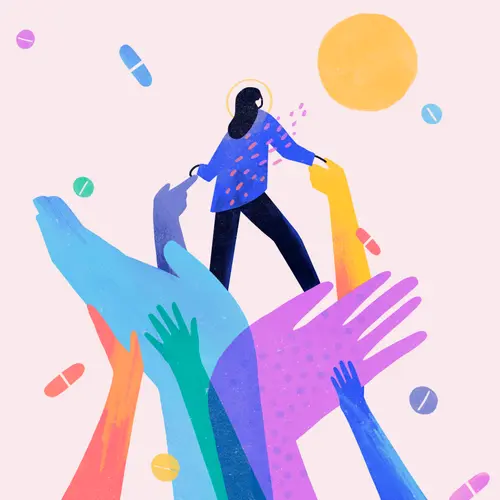Who is more affected by migraines: women or men? And how common is the condition among different racial and ethnic groups of people?
The field of epidemiology holds the answers to these questions. It’s a branch of science that looks at how often diseases affect different groups of people and why. Medical experts can then use the information to plan ways to prevent or manage diseases.
Migraines are one of the most common disorders worldwide. Estimates show it may affect up to 148 million people. In the U.S. alone, more than 37 million people live with this neurological condition, which stems from a mix of things like your genes, environment, and lifestyle (including sleep, diet, and stress).
It’s possible to dig deeper into the numbers to get insights about migraines’ connections to gender, race, and ethnicity. Here’s what the epidemiology data shows.
What Do The Numbers Say About Migraine and Gender?
In the U.S., women are about three times more likely than men to have migraines. Each year, up to 17% of women get migraine attacks compared with 6% of men. In both women and men, migraines generally grow more prevalent leading up to age 40 and less so after.
Some experts say certain hormonal changes can play a key role as to why migraines affect more women than men.
Many women with migraines say they get headaches before or during their period. Levels of the hormone estrogen fall just before menstruation, and that may contribute to headaches -- although the degree of change in the hormone, and not the level itself, may be the main migraine trigger.
Estrogen levels also rise and stay higher during pregnancy, which is when most mothers-to-be with migraines see their headaches improve. After pregnancy though, the sudden fall in estrogen may set off headaches again.
The yearslong transition to menopause, called perimenopause, is another hormone-related change that leads to more frequent and severe migraine attacks for many women. During this time, hormone levels rise and dip unevenly. But most women find their migraine attacks improve once they stop getting their period in menopause.
Keep in mind, some women are more affected by hormones than others. If you get hormone-related migraine attacks, ask your doctor what at-home remedies or treatments might help you feel better. They may recommend things like:
- A cold cloth or ice pack on your head or neck
- Relaxation exercises
- A type of therapy known as biofeedback
- Acupuncture
- OTC pain meds like naproxen or ibuprofen
- Certain prescription drugs, like triptans or gepants
What Do the Numbers Say About Migraines, Race, and Ethnicity?
One review of studies in 2015 found that, among major racial and ethnic groups of people in the U.S., the percentage of people with migraines or severe headaches was highest in American Indians or Alaska Natives (18.4%) and lowest in Asian Americans (11.3%).
An earlier review found that on average, the frequency of severe headaches or migraines from 2005 to 2012 was:
- 17.7% for Native Americans
- 15.5% for white Americans
- 14.5% for Hispanic Americans
- 14.45% for Black Americans
- 9.2% for Asian Americans
The review also showed that migraines were more widespread in women of all races and ethnic backgrounds compared with men. Chronic migraines -- meaning 15 or more headache days per month -- occurred mostly in Hispanic women and least so in white men.
The percentages of people with migraines in minority groups may be higher than reported. Many Black Americans, Indigenous peoples, and people of color face obstacles that can keep them from getting represented in research and from getting diagnosed. For example, at least one expert says if you are Black or Hispanic, you are less likely to receive a migraine diagnosis.
Among people with headaches, 46% of Black patients seek a doctor’s help compared to 72% of whites. This could be due to things like:
- Not enough access to health care
- Discrimination from doctors
- Lack of affordable care
Some experts argue that the health care industry needs systemwide changes to tackle racial gaps in diagnosis and quality of treatment. They also call for doctors to become more aware of their own biases and learn about cultural differences among their patients.
If you think you may be experiencing migraines, the American Migraine Foundation has a guide about how to talk to your doctor to make sure you get the treatment you need.

